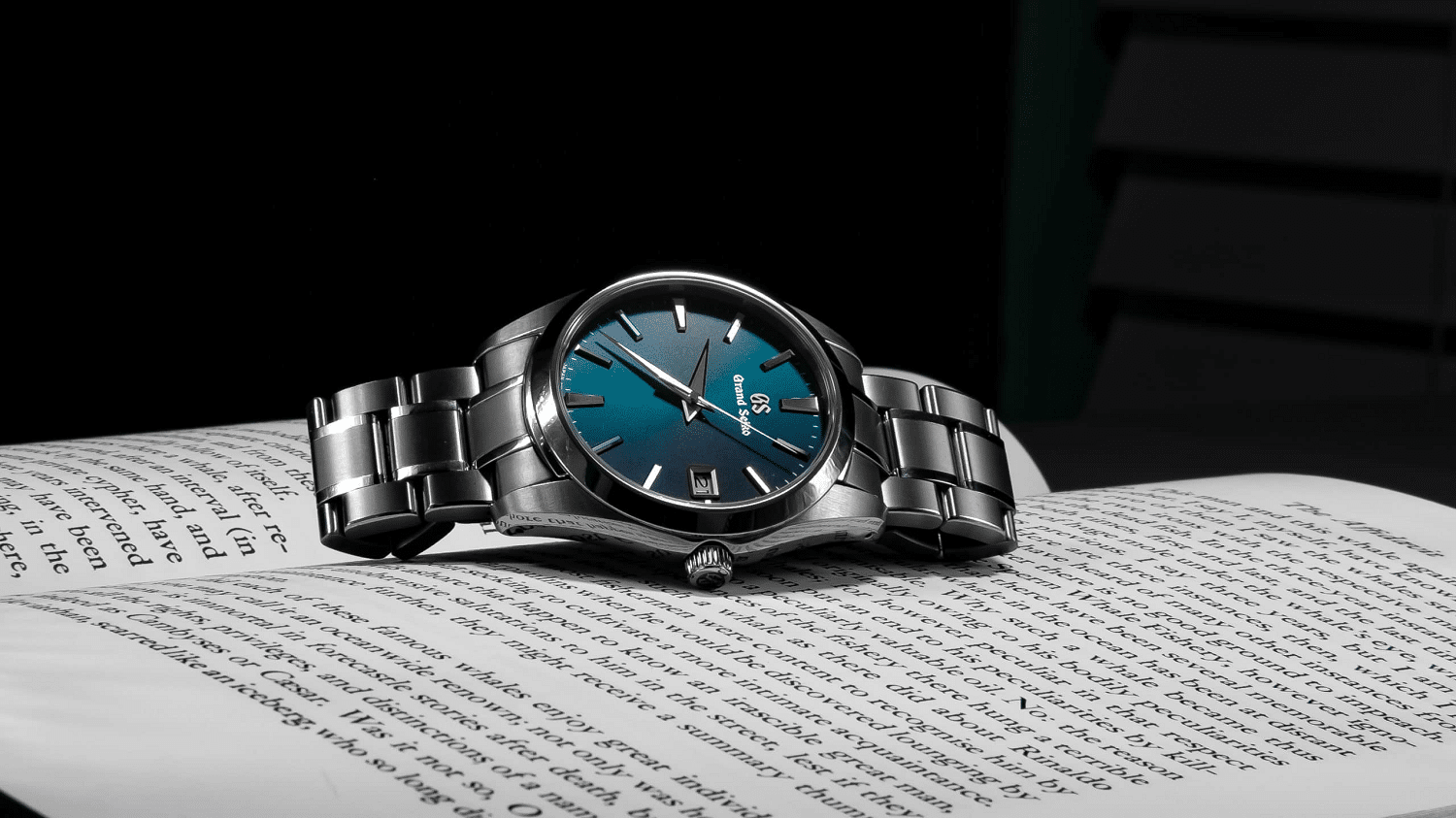At its core, a quartz watch is a battery-powered wristwatch that keeps time using a small quartz crystal. When the battery sends electricity through that crystal, it vibrates at a steady rate, and that consistent pulse is what regulates the timekeeping. No winding, no fuss. Pop in a battery, and it runs.
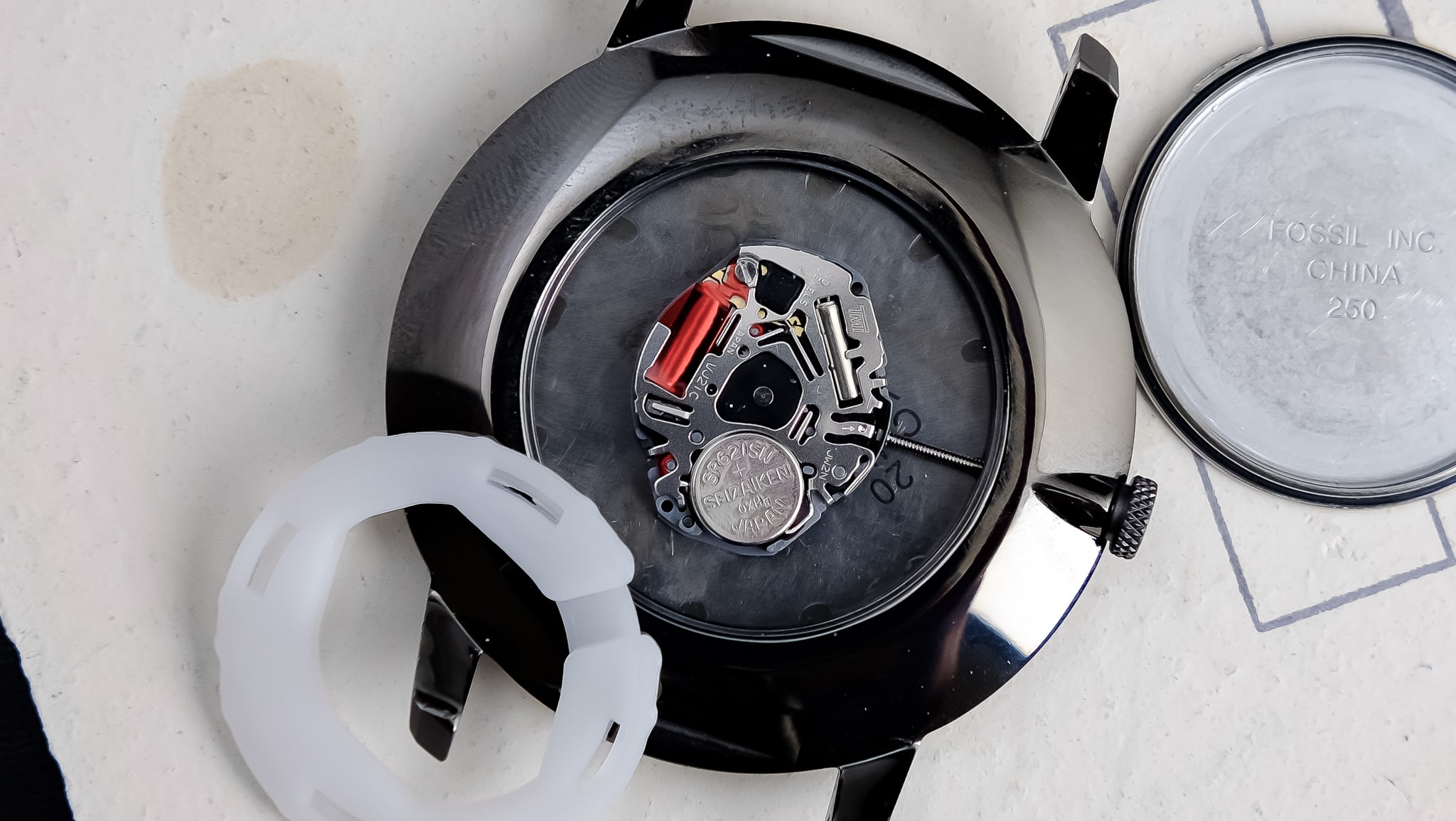
Quartz matters because, frankly, it works, and that means a lot when you’re tired of mechanical watches that demand constant attention or cost more than they should. If you’ve ever been overwhelmed by luxury price tags or confused by mechanical jargon, quartz watches are a facet of watch collecting without the stress.
They’re simple, dependable, and doesn’t try to impress with glamorous machinery. That’s probably why we keep going back to them after nearly a decade of reviewing watches professionally; whether we’re commuting to work, running weekend errands, or rotating something reliable into the watch box.
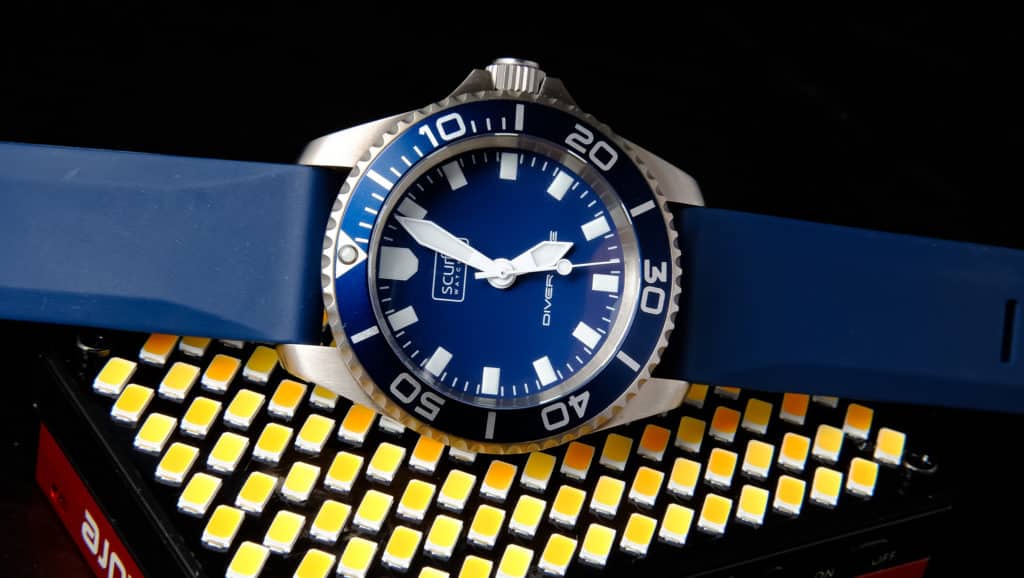
How Do Quartz Watches Work?
At the heart of a quartz watch is a surprisingly small cast of characters: a battery, a quartz crystal, a microchip, and a step motor. Each plays a simple role, but together they keep your watch ticking with impressive accuracy.
- It all starts with the battery. This little power cell sends a steady stream of electricity into the movement. Unlike mechanical watches, which rely on springs and gears, quartz watches are powered entirely by electricity.
- Next comes the quartz crystal. Cut into the shape of a tiny tuning fork, this crystal reacts to the electrical charge by vibrating at a particular frequency of 32,768 times per second. That’s not a random number. It’s a power of two, which makes it easy for the circuit to divide down.
Note: This effect is called the piezoelectric effect. When voltage is applied to a quartz crystal, it vibrates consistently at a known frequency. That vibration is what makes quartz such a solid choice for regulating time.
- The microchip handles the counting. It reads those vibrations and uses a series of frequency dividers to break them down into one pulse per second. Each time it hits the final count, it sends a small jolt of energy to the motor.
- That’s where the step motor comes in. It converts those electrical pulses into mechanical movement, nudging the gears forward one click at a time. That’s what moves the hands on your dial.

In simple terms, the battery keeps the crystal humming, the microchip keeps count, and the motor keeps time. All of it happens behind the scenes, quietly and efficiently; no winding, no noise, no fuss. Just reliable timekeeping, one tick at a time.
Before we proceed, it’s helpful to compare quartz with its more traditional counterpart: the mechanical watch.

Quartz vs. Mechanical Watches: What’s the Difference and Why It Matters
If you’ve ever debated between going quartz or mechanical, you’re not alone. They both tell time, but they do it in entirely different ways. Those differences shape how the watch feels on your wrist, how often you have to mess with it, and what kind of satisfaction (or headache) you’ll get from wearing it.
| Feature | Quartz Watch | Mechanical Watch |
| Power Source | A battery (or solar cell) provides steady electrical energy | Wound mainspring; stores energy from manual or automatic winding |
| Timekeeping Mechanism | Quartz crystal vibrates at 32,768 Hz when charged, regulating time | Escapement mechanism controls energy release from mainspring through gear train |
| Movement of Hands | A step motor converts electric pulses to move the hands once per second | Gears and levers move hands in a smooth, continuous motion |
| Accuracy | Typically ±15 seconds per month; extremely stable | Often ±5–10 seconds per day; varies with wear and environment |
| Maintenance | Battery change required every 1–3 years; no regular servicing needed | Needs cleaning, servicing, and oiling every 3–5 years to stay accurate |
| Durability | Fewer moving parts; better resistance to shock and wear | Complex internals; more vulnerable to shock, magnetism, and gravity |
| Lifespan | Long-lasting with minimal care; electronics may degrade over decades | Can last generations if serviced properly; purely mechanical, no electronics |
| Display Types | Can be analog (hands), digital (LCD/LED), or a hybrid of both | Always analog; time is displayed through physical hands and mechanical movement |
| User Interaction | Mostly passive; set the time and forget it | More hands-on; manual winding, date setting, and time adjustments add to the experience |

Why Do The Differences Matter?
Knowing the difference helps you buy the right watch for the right reason. If you’re looking for low-maintenance, practical reliability, and spot-on timekeeping, quartz has got you covered. If you’re in it for the mechanical artistry and emotional connection, then go mechanical and enjoy the ritual.
Neither is better across the board; they speak to different kinds of watch people. Sometimes we’re both.
Value and Collectability
This is where perception plays a significant role. Mechanical watches tend to hold their value over time and are often considered more collectible, especially if they come from well-known brands or feature in-house movements. Quartz watches, even high-quality ones, are frequently overlooked unless they’re vintage, rare, or extremely well-executed.
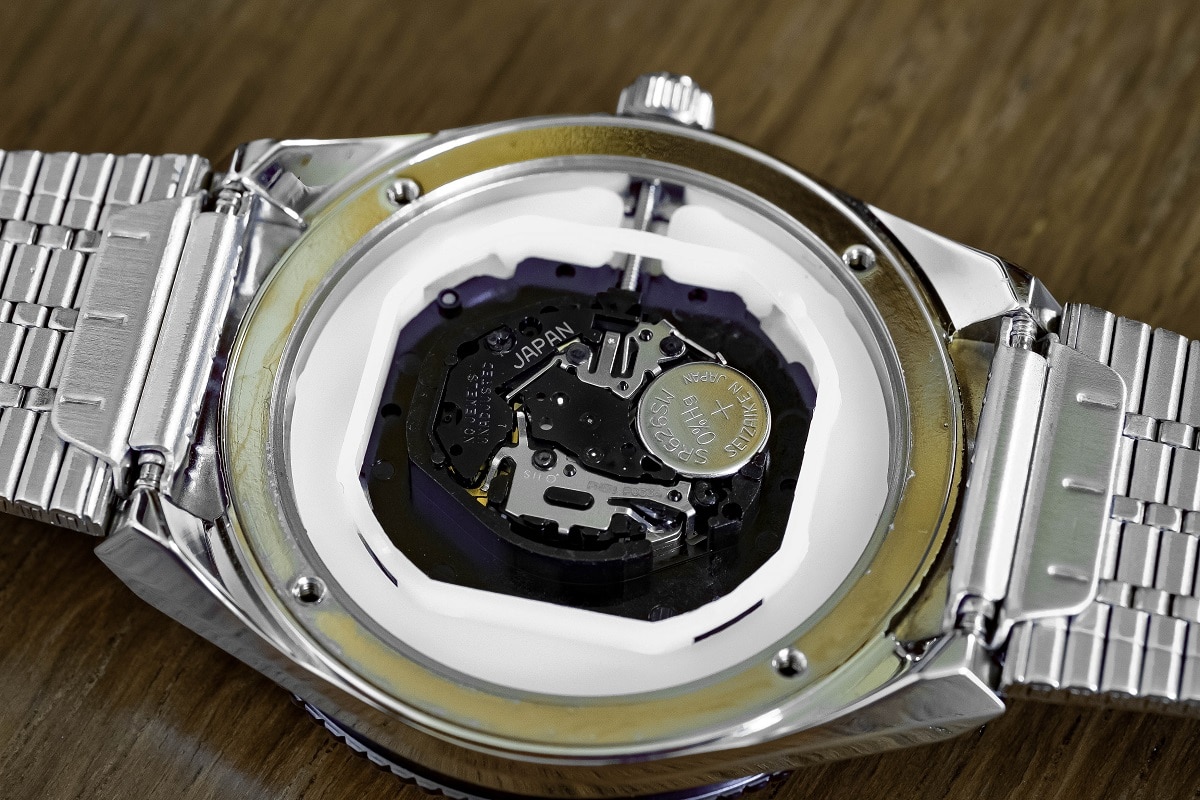
Key Benefits of Quartz Watches
For all the talk about how quartz watches work, the real question is why you should care. What does this mean when you’re picking something to wear on your wrist every day, or choosing between a $70 quartz beater and a vintage hand-wound dress watch with questionable service history?
Here’s why even after experiencing some of the world’s finest mechanical watches hands-on, quartz watches remain among our most preferred choices.
1. Seriously Accurate, All the Time
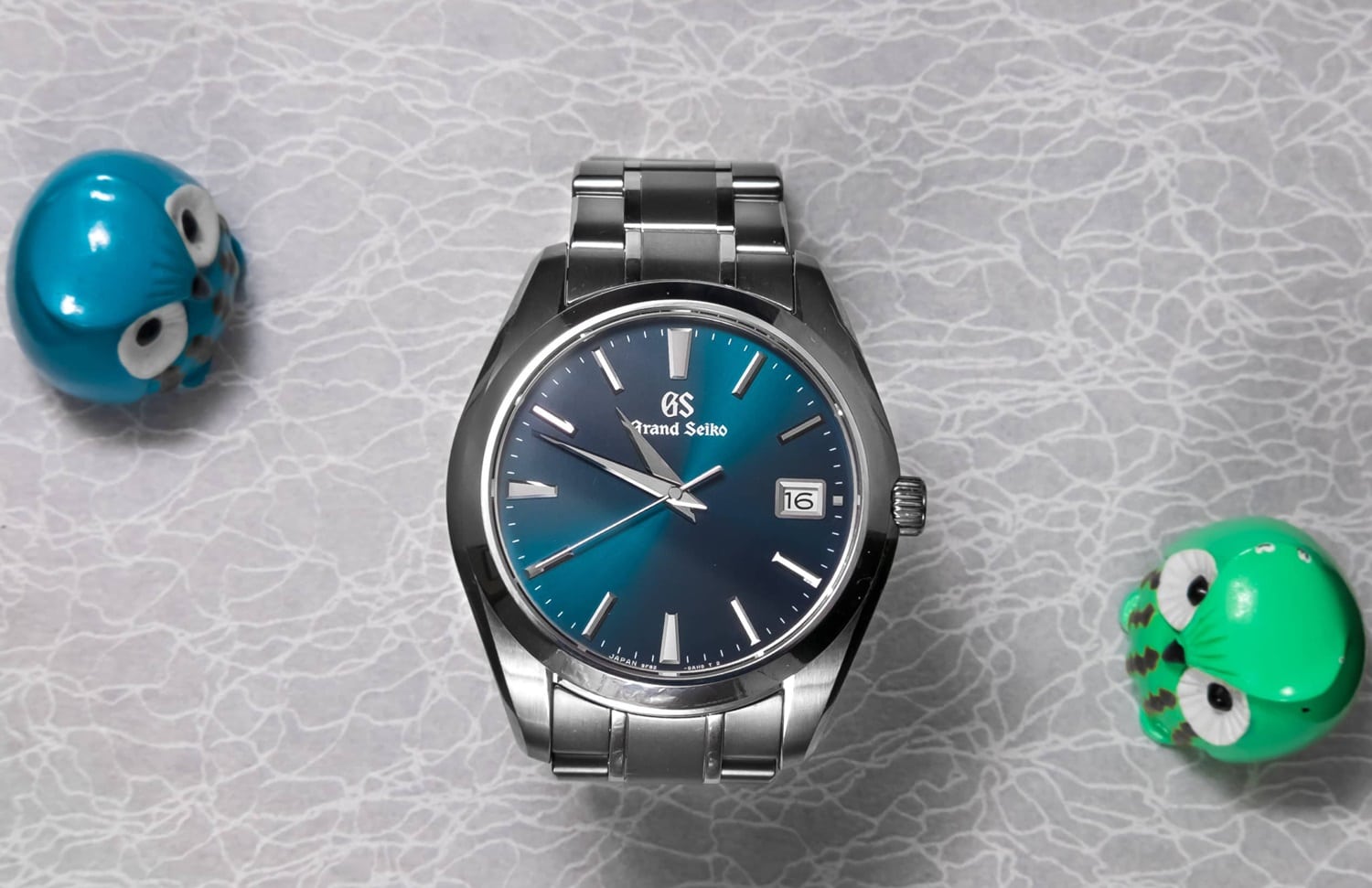
If you’re the kind of person who wants your watch to, you know, tell the right time, quartz is your friend. Thanks to that crystal vibrating at a precise frequency, most quartz watches stay within ±15 seconds a month. Compare that to even a well-regulated mechanical watch that might drift by that much in a few days.
- No worrying about position, magnetism, or altitude.
- Set it and forget it, until maybe next daylight saving time.
2. Affordable, No Matter Your Budget
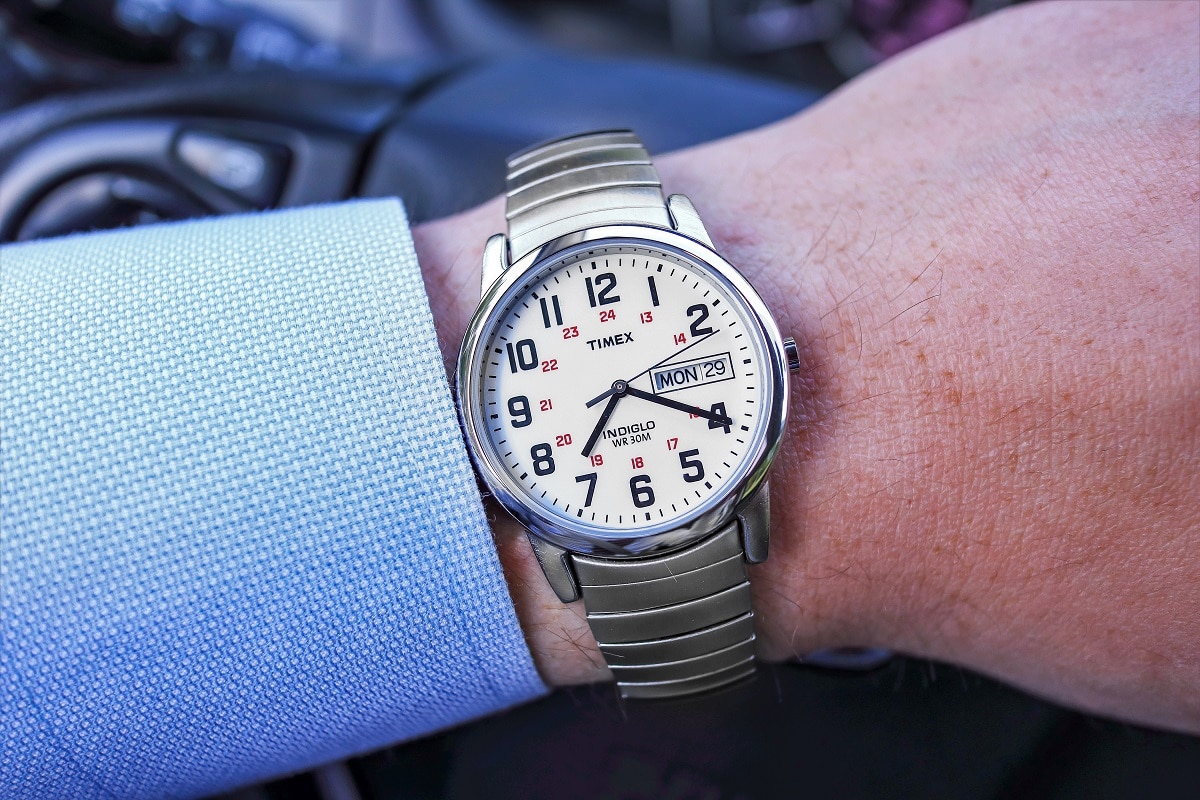
One of the best things about quartz is that you don’t have to empty your bank account to get something decent. Whether you’re spending $50 or a few hundred, there are great options that punch well above their weight.
- Brands like Casio, Citizen, and Seiko offer fantastic quartz watches under $200.
- Even microbrands and vintage finds often use quartz to keep costs down while delivering unique designs.
Watch collecting can get expensive fast, especially if you’re chasing hype or brand prestige. But that doesn’t mean you have to settle for something bland or disposable.
Quartz proves you can get great design, solid build quality, and reliable performance without paying for a logo. For many of us, that balance between value and wearability is precisely what makes quartz such a smart buy.
3. Tough Enough for Everyday Life

Quartz watches are well-suited for withstanding a beating. With fewer moving parts inside and no sensitive escapement to worry about, they handle bumps, drops, and the occasional accidental smack against a doorframe like champions.
- Ideal for field watches, beaters, and anything you’d wear while doing yard work or hiking.
- Some models even go full G-Shock mode, offering serious durability without the need for a mechanical movement.
4. Low Maintenance, Long Life

The upkeep on a quartz watch is about as simple as it gets. Most batteries last between 2 and 5 years, depending on the watch and its features. Swap it when it dies, and you’re back in business; no trips to a watchmaker for regulation or oiling tiny gears.
- No daily winding. No power reserve anxiety.
- Grab it from the drawer, and it’s still ticking.
- Perfect for folks who want reliability without the headache.
Whether you’re running late or not in the mood to mess with a crown, quartz is always ready.
In short, quartz watches do their job effectively. If you’re not trying to babysit your wristwatch or obsess over how many seconds it gains overnight, quartz gives you a stress-free way to wear something reliable and stylish. It might not have the mechanical romance, but it has a kind of quiet confidence all its own.
With the benefits clear, it’s worth knowing what kinds of quartz watches are available and how they suit different wrists and lifestyles.
Common Types of Quartz Watches
Once you’ve figured out what a quartz watch is, the next hurdle is often choosing one that fits you. Not your Instagram feed. Not your coworker’s collection. And with so many options, such as analog, digital, solar, and GPS, it helps to know what’s practical versus what’s just marketing gloss to avoid your collections from ending up in drawers.
Here’s a quick rundown of the quartz types you’re most likely to encounter (and possibly add to your watch collection).
1. Standard Analog Quartz
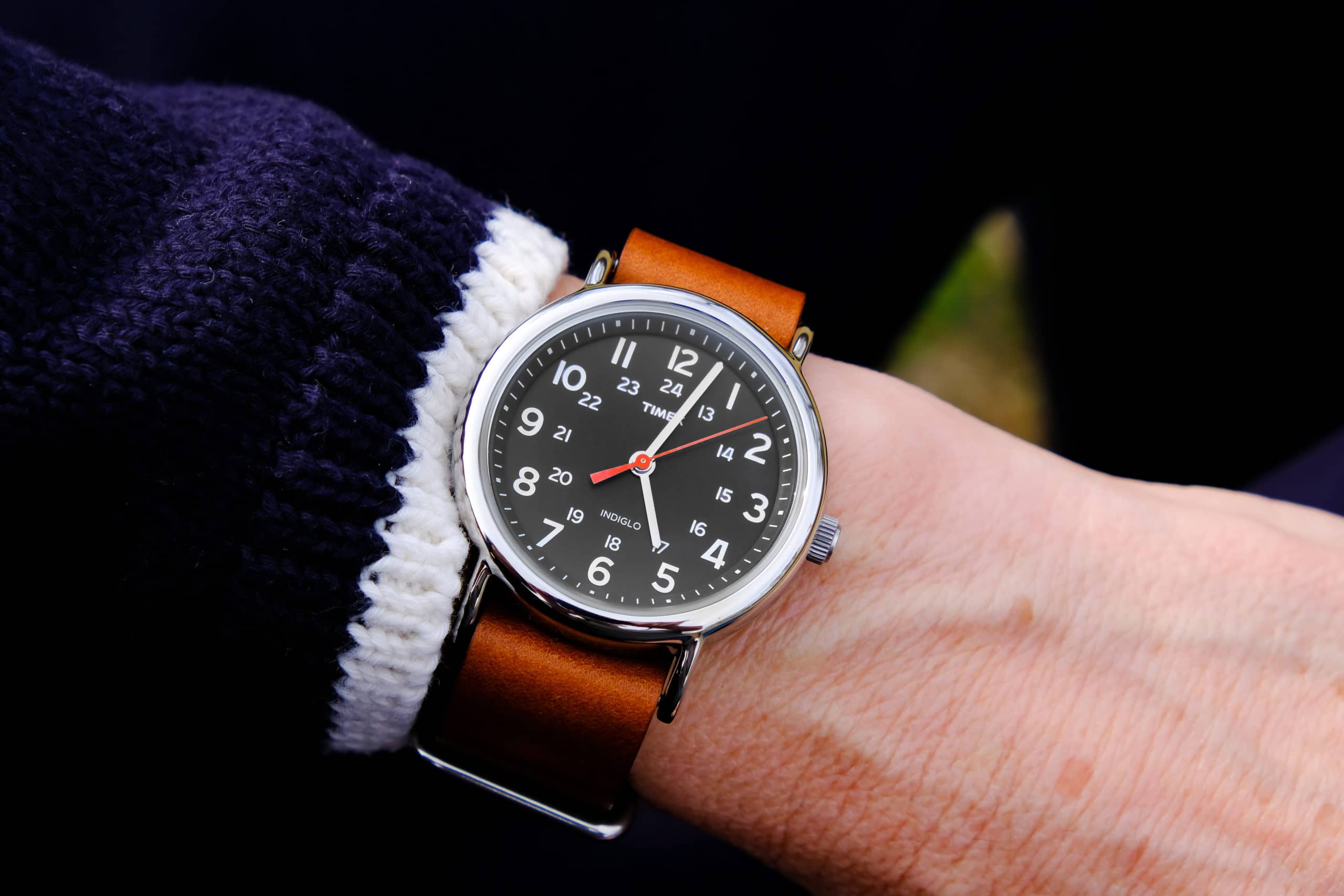
These are your classic watches with hour, minute, and second hands; nothing flashy, just clean and familiar. Powered by a step motor, they’re what most people picture when they think “quartz.”
You’ll find them everywhere, from the affordable Timex Weekender (hands-on review) to microbrand field watches that deliver exceptional performance.
Pro Tip: If you’re after an everyday piece that’s easy to read and low on distractions, standard analog quartz is your safest bet.
2. Digital Quartz

Think LCD or LED displays, often loaded with extra functions like alarms, stopwatches, world time, and even calculators. Casio has practically defined this space, from the classic F91W to feature-packed G-Shock models like the G-Shock CasiOak, built to survive about anything.
Did You Know? The humble F91W has been in production since 1989 and remains one of the most accurate watches available for under $20. You can learn more about our personal experience with the watch in the hands-on review.
3. Solar-Powered Quartz

These use light (sunlight or artificial) to charge a small battery or capacitor inside. There’s no need to replace batteries every few years, and the power reserve can often last for months once fully charged. Citizen’s Eco-Drive and Casio’s Tough Solar are the most well-known names here. Feel free to explore and learn about the best solar quartz watches we’ve ever reviewed.
Pro Tip: Leave your solar watch on the windowsill occasionally to keep it topped up, especially if it has been sitting in a drawer.
4. Radio-Controlled and GPS-Synced Quartz

These watches sync with atomic clocks via radio signals or GPS, correcting themselves for insane accuracy. They even account for time zones and daylight saving changes, and are hence great for frequent travelers or accuracy nerds. Seiko’s Astron GPS line is a good example.
Did You Know? GPS watches don’t need a cell signal or Wi-Fi. They connect directly to satellites, so it’s like strapping a tiny space station to your wrist.
5. Meca-Quartz (Hybrid Quartz)

A niche but growing favorite among enthusiasts, meca-quartz movements combine a quartz base with a mechanical chronograph module. The result? Quartz-level accuracy with a satisfying, mechanical-feeling chrono push.
Look at the Seiko VK63 or VK64 movements often used in chronographs, such as the Dan Henry 1964 Gran Turismo Chronograph (hands-on review). The ticking second hand may be quartz, but those snap-back chrono hands feel straight out of a mechanical.
Pro Tip: If you like the look and feel of a mechanical chronograph but don’t want to pay mechanical service prices, a meca-quartz is a smart move.
Whether you’re into clean minimalism, rugged functionality, or tech-packed precision, there’s a quartz watch out there that’ll fit your vibe, and probably your budget, too.
What to Look for When Buying One
Quartz watches are already known for being reliable and low-maintenance, but what we’ve learned after wearing countless models is that not all of them are created equal. This is where knowing what a quartz watch is and how it varies by build, movement, and usage makes all the difference.
If you’re in the market for one, it’s worth paying attention to a few details we’ve learned about over the years that can shape how well the watch fits your lifestyle and holds up over time.
1. Movement Origin

Where the movement is made doesn’t only influence the price; it often speaks about reliability, build quality, and brand reputation.
- Swiss quartz movements (such as ETA or Ronda) tend to appear in higher-end or dressier pieces. They’re well-engineered and often serviceable if something goes wrong.
- Japanese quartz movements (think Seiko, Miyota, or Casio) are more common in budget-friendly watches. They’re workhorses: super reliable and designed to keep going.
- Other regions (like China or Southeast Asia) may produce more generic or unbranded movements, which are fine for fashion watches but might be harder to service.
Why it Matters: If you care about long-term performance and replaceable parts, knowing the movement’s origin gives you a head start.
2. Battery Life and Serviceability
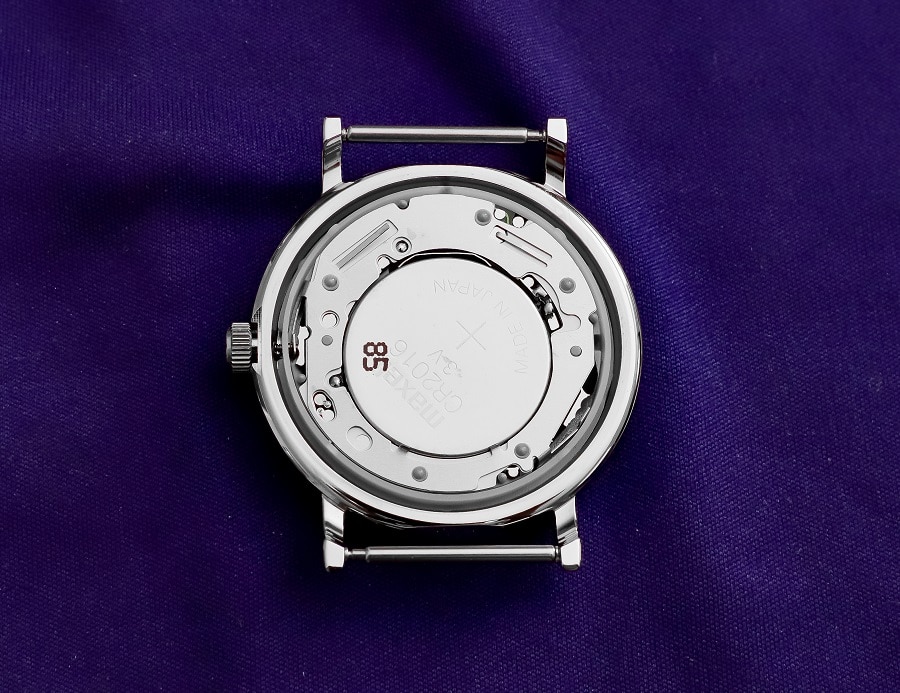
Most quartz watches run on button-cell batteries that last anywhere from 2 to 5 years. Some solar-powered models stretch that even further, and others, like digital G-Shocks, can last close to a decade.
- Ask whether the battery is easy to replace and if it requires special tools.
- Bonus points for watches with “hatch-style” casebacks for quick swaps.
Pro Tip: When purchasing vintage quartz, verify that the movement is still supported and that the battery type is still available.
3. Case Quality and Durability
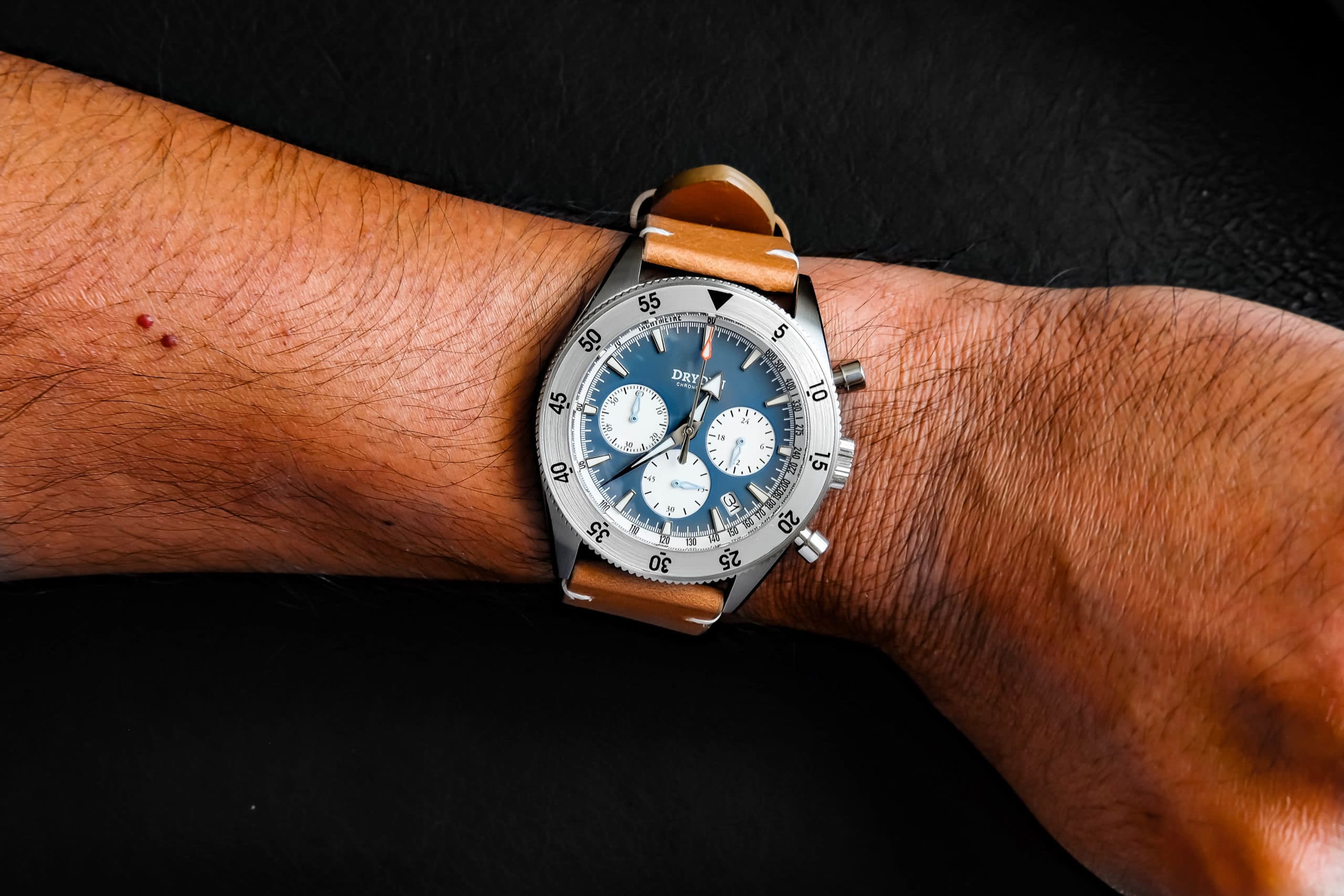
Quartz watches might be more shock-resistant, but that doesn’t mean the case is always tough.
- Look for stainless steel cases over base metal or plastic if you want something that lasts.
- If you’re outdoorsy or prone to wrist-bashing, check water resistance and consider a sapphire crystal for added scratch protection.
- Resin cases (like those on many Casios) are light and durable, but may age faster.
Why it Matters: You don’t want to pair a tough movement with a case that falls apart after one camping trip.
4. Intended Use

Think about when and how you’ll wear it. Match the watch to your routine.
- Daily wear? Go for something slim, comfortable, and easy to read.
- Travel? A world-time quartz or radio-controlled piece will save you from fiddling with the time zone every time you land.
- Outdoor use? Try to source rugged, waterproof, and virtually indestructible pieces, such as the G-Shock collection.
- Desk diving or dress-up duty? Maybe a meca-quartz chronograph or minimalist field-style piece with a reliable Japanese movement.
The bottom line? A quartz watch can be a no-fuss, grab-and-go timekeeper, but picking the right one means thinking beyond “it runs on a battery.” Movement origin, battery life, case quality, and how you plan to use it all play a role in whether that watch becomes your daily driver or ends up forgotten in the drawer.
Everyone Needs At Least One Quartz Watch
If you’ve ever spent hours searching for the “perfect” watch, only to feel overwhelmed by brand noise or price tags that seem more about flex than function, you’re not alone. Finding something that suits your needs without draining your wallet or your patience can feel impossible.
That’s where understanding what a quartz watch is makes a difference. Quartz watches may not always steal the spotlight from their mechanical cousins, but when it comes to pure reliability, ease of use, and bang for your buck, they’re hard to beat.
Whether you’re getting started with watches or need something dependable to grab and go, quartz makes a strong case for itself. Apart from being a stepping stone, it can be a smart, permanent staple in any collection, sitting right alongside your vintage pieces, automatics, and everything in between.
We’ve also discussed quartz watches on the TBWS Podcast quite a bit over the years, but below are some of our favorite episodes dedicated to the topic:

Co-Founder & Senior Editor
Michael Peñate is an American writer, photographer, and podcaster based in Seattle, Washington. His work typically focuses on the passage of time and the tools we use to connect with that very journey. From aviation to music and travel, his interests span a multitude of disciplines that often intersect with the world of watches – and the obsessive culture behind collecting them.
